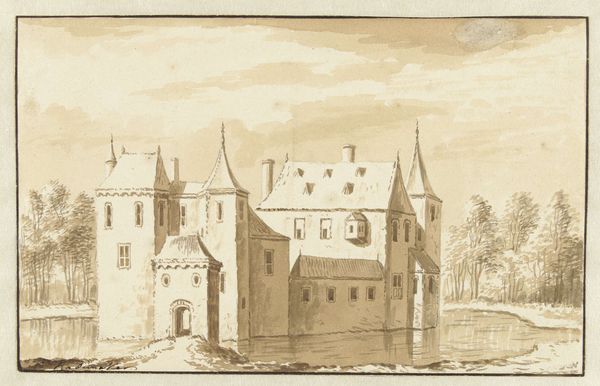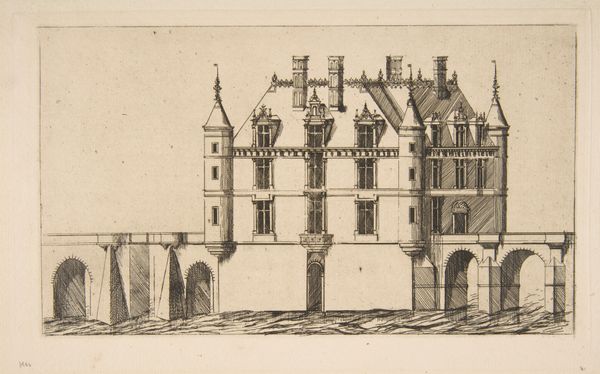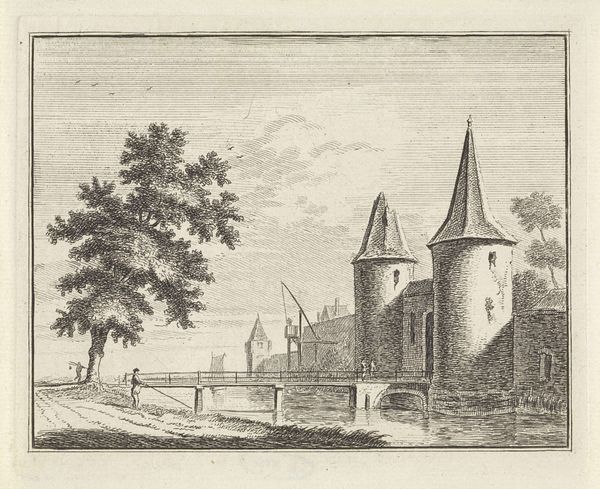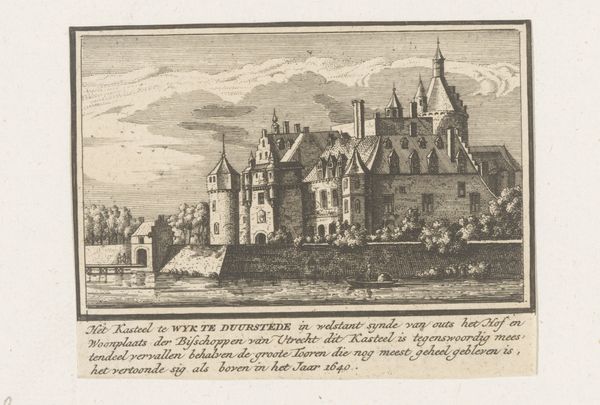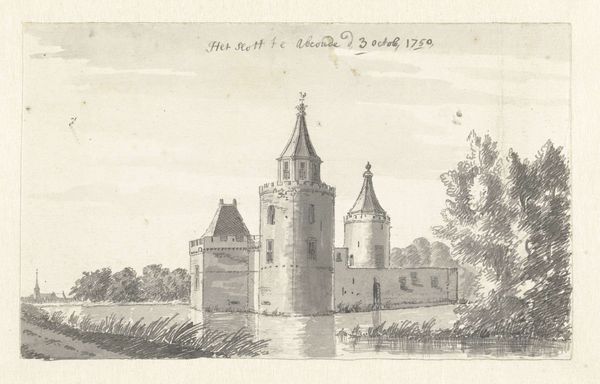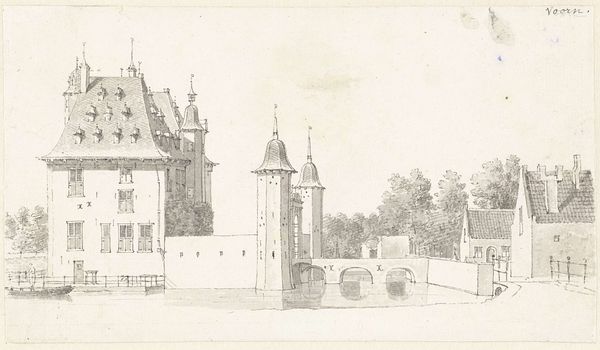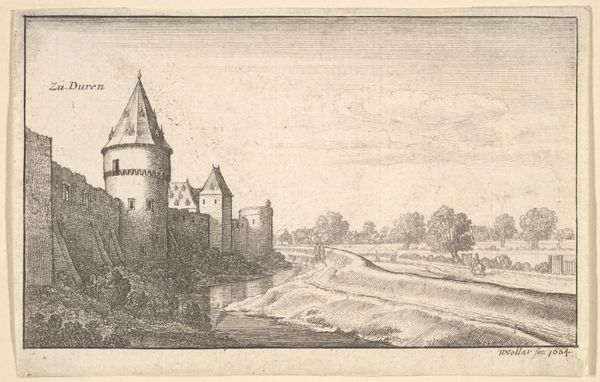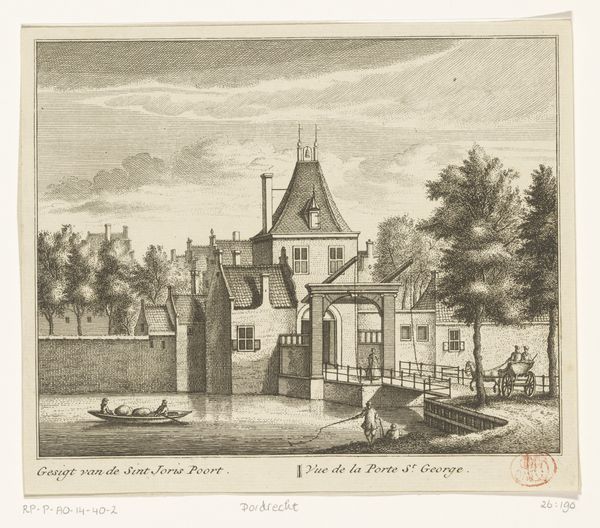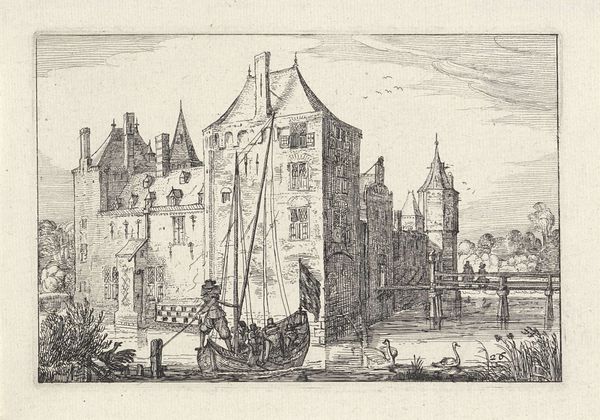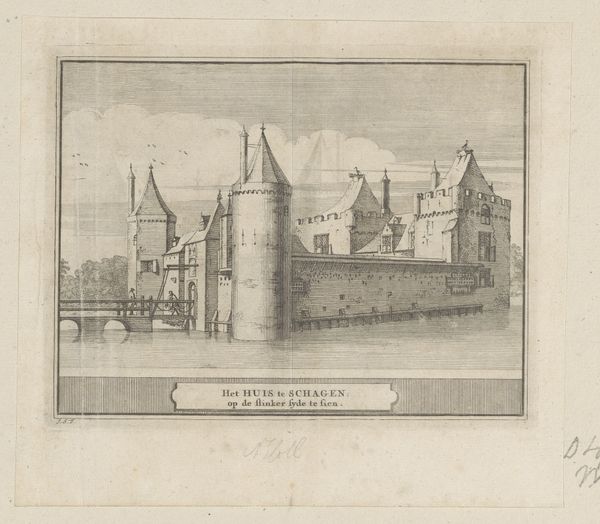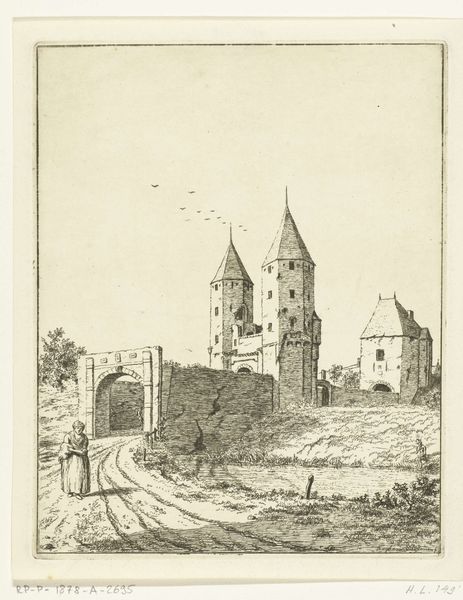
print, etching
#
dutch-golden-age
# print
#
etching
#
landscape
#
etching
#
cityscape
Dimensions: height 80 mm, width 106 mm
Copyright: Rijks Museum: Open Domain
This print, depicting the Huis ter Does near Leiderdorp, was made by Abraham Rademaker around 1620, using etching. Etching is an indirect process where the artist covers a metal plate with a waxy, acid-resistant ground, then scratches an image into it. The plate is then submerged in acid, which bites away the exposed metal, creating recessed lines. Ink is applied to the plate, filling these lines, and the surface is wiped clean. Finally, the plate is pressed onto paper, transferring the image. Rademaker’s delicate lines capture the texture of the stone, the reflection of the water, and the sky. Notice the amount of labor involved in creating this kind of image, and the amount of time and skill to produce it. The availability of prints like these helped democratize access to images and information, playing a role in the development of public knowledge.
Comments
No comments
Be the first to comment and join the conversation on the ultimate creative platform.
